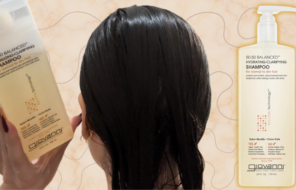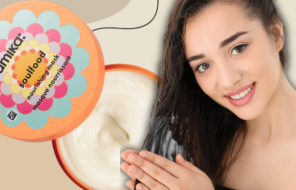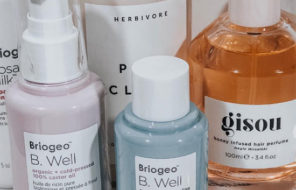One of the secret weapons behind shiny, healthy, and vibrant hair is using color-depositing conditioners. This unique product category saves time and money by nourishing the hair and amping up its color. If we’ve gotten you intrigued, keep reading!
In this article, we’ll explain everything you need to know about color conditioners, including what they are, the different types, and how they compare to color-depositing shampoos. We’ll even explain how you can make your own color-depositing conditioners, as well as how to use one. Let’s get colorful!
In this article:
- What Is a Color-Depositing Conditioner?
- Types of Color Conditioners
- Color-Depositing Conditioners vs. Shampoo
- Making Your Own Color-Depositing Conditioner
- How to Use Color-Depositing Conditioner
What Is a Color-Depositing Conditioner?
A color-depositing conditioner is a pigmented conditioner that deposits color into the outer parts of the hair shaft. Since it’s a conditioner formula, it also helps to condition the hair.
Conditioning means a few different things: it moisturizes the hair, creates a protective layer outside the hair shaft, smooths down the cuticles, and makes it so that the hair is less prone to getting tangled and is also easier to detangle.
As far as coloring the hair goes, different color conditioners do so in different ways. Some are very pigmented, almost like a semi-permanent hair dye, while others only offer the subtlest tint.
Types of Color Conditioners
It’s important to know the different types of color-depositing conditioners, so you can pick the right one for you!
Coloring Conditioners
Let’s start with the most dramatic of the bunch! This rare category of color conditioner can double as hair dye because it’s so pigmented. Such a formula can be used exactly like a dye, or it can be used like a conditioner for achieving a lighter tint or a color refresh.
As conditioners, the more pigmented formulas are rarely amazing, and sometimes they can even leave certain hair types feeling a little dry. This is fine since they shouldn’t be used more than once a week, while the rest of the time, you can use a proper hair conditioner.
Lightly Tinted Conditioners
Lighting tinted color-depositing conditioners are a lot more common, and they’re also easier to use even if their results are less dramatic. These conditioners have a slight tint of color that’s meant to enhance dyed or natural hair. They’re fantastic if you want to prevent your hair dye from fading rather than trying to actively enhance it.
Usually, these conditioners come as part of a system with a more strongly pigmented color-depositing shampoo, although they can be used alone. If you’re nervous about using an overly-pigmented hair conditioner, these are a great alternative since the color builds gradually and the results are subtle.
Neutralizing Conditioners
Finally, there are neutralizing hair conditioners that usually come in blue or purple. They are similar to hair toners, with a color that’s meant specifically to neutralize unwanted undertones.
A purple conditioner can neutralize yellow tones in blonde or platinum hair, a blue conditioner neutralizes orange and brassy tones while giving the hair a cool tint, and green conditioners neutralize red tones in darker hair.
They’re also lightly tinted, so their results are subtle and gradual. It’s often possible to buy a matching, more pigmented neutralizing shampoo if you want faster results or to deal with more intense undertones.
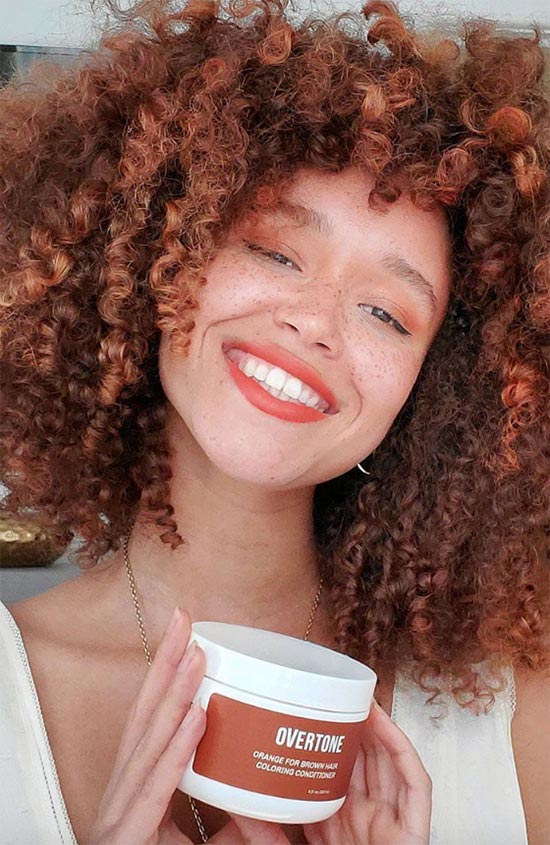
Color-Depositing Conditioners vs. Shampoo
When it comes to color-depositing haircare products, you can choose from both shampoos and conditioners, but how do the two product types compare to one another?
First, there are the fundamental differences: shampoos are cleansing products, so they’re made with surfactants that foam up in the water and help to remove grime and oils. On the other hand, conditioners are like moisturizers for the hair, so they’re designed to nourish, seal the cuticles, and make the hair smoother and less likely to tangle.
Beyond that, however, there are also some big differences when it comes to color-depositing effects. Color-depositing shampoos are almost always more pigmented than color-depositing conditioners. Because of this, a color-depositing conditioner can be used more often for consistent refreshes, while you may want to use a color-depositing shampoo more sparingly.
When they come from the same brand, color-depositing shampoos and conditioners are usually meant to be used together, one right after the other, although the truth is that it’s not mandatory. Depending on your needs, you might prefer to use a brand’s full system or just one of the steps.
Making Your Own Color-Depositing Conditioner
It can be very easy to create your own DIY color-depositing conditioner! All you need is your favorite hair conditioners and a semi-permanent dye in your color of choice.
In a plastic bowl, squeeze out a bit of conditioner, and then add a dollop of semi-permanent dye. The more dye you add, the more dramatic the results, while if you use less dye, you’ll achieve subtler effects. Mix everything well, and you’ll have your own customized color-depositing conditioner!
Since we always worry about formula stability, we recommend mixing up just enough for one use. This process is so quick and easy that it shouldn’t be a problem to make a little bit whenever you need a color refresh.
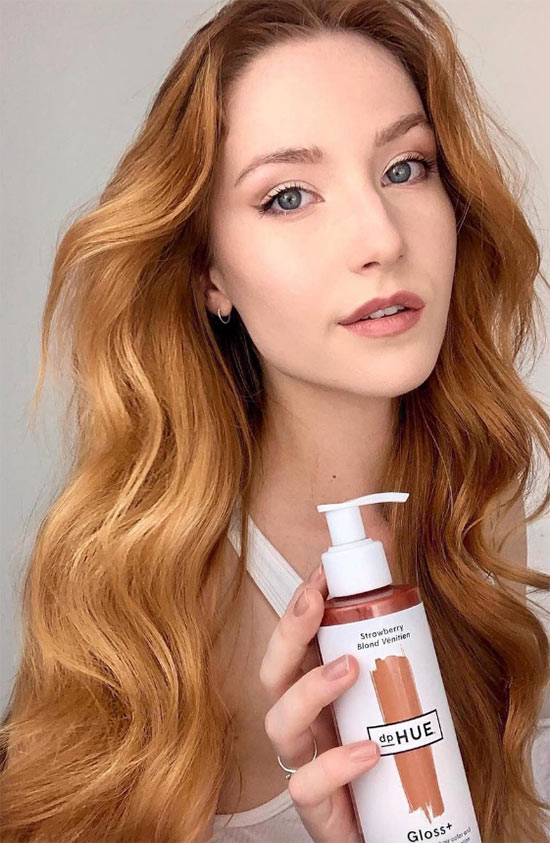
How to Use Color-Depositing Conditioner
Using a color-depositing conditioner isn’t particularly different from using a regular conditioner, but with just a few small differences. If you have a more pigmented formula, you may also choose to use it as though it was a regular semi-permanent dye.
As a Conditioner
- To start, hop in the shower and shampoo your hair well.
- Next, squeeze out a dollop of your color-depositing conditioner. If the formula is heavily pigmented, you might want to wear plastic gloves for this part.
- Apply the conditioner to your hair, starting at the mids and pulling it downwards. Then, add a little closer to the roots.
- Be extra careful to ensure the color conditioner is evenly dispersed to avoid having empty spots that don’t get treated.
- For more intense color, leave the conditioner in your hair for a few minutes.
- Finally, rinse the conditioner out of your hair.
- If your hair doesn’t feel conditioned enough, you can follow it up with a regular conditioner or a deep conditioner, which you should also rinse out of your hair.
- Get out of the shower and style your hair as normal! That’s it – your hair should now be either toned or refreshed.
As a Dye
- Start with slightly damp hair since color conditioners are not intended for dry hair unless written on the package.
- Put on a pair of plastic gloves to avoid staining your fingers.
- Squeeze out some of your color conditioner.
- With a hair dye brush or with your fingers, apply the conditioner to your hair section by section, starting at the roots and pulling the color downwards to the ends.
- Once your hair is covered, leave the conditioner in your hair for 15-30 minutes.
- Finally, hop in the shower to rinse the color out. If necessary, follow it up with a normal hair conditioner.
- Get out of the shower, let your hair dye, and then enjoy your new look!
Photos via @dphue, Instagram


